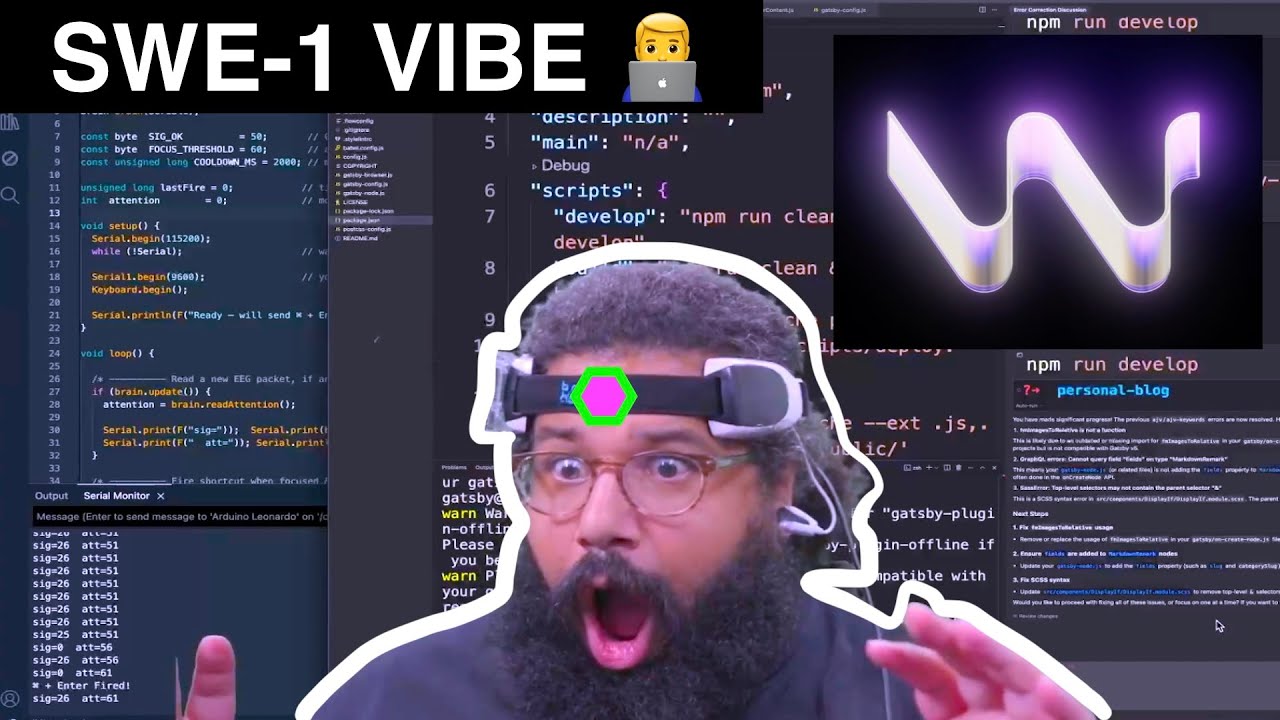The video discusses Windsurf, an advanced AI coding model that outperforms Claude-3.7 in accuracy, efficiency, and problem-solving across various programming tasks, highlighting its potential to revolutionize software development. It also emphasizes the importance of ongoing research to address challenges like bias and integration, envisioning a future where AI significantly enhances coding productivity and autonomy.
The video titled “SWE-1: Windsurf Creates AI Coding Model that BEATS Claude-3.7?” explores the development and capabilities of Windsurf, an innovative AI coding model designed to outperform existing models like Claude-3.7. The presenter begins by highlighting the rapid advancements in AI-powered coding tools, emphasizing how Windsurf aims to push the boundaries of code generation accuracy and efficiency. The video sets the stage by discussing the importance of such models in accelerating software development and reducing manual coding efforts.
Next, the video delves into the technical architecture of Windsurf, explaining how it leverages cutting-edge machine learning techniques and large-scale training datasets. The model is trained on a diverse array of programming languages and coding tasks, enabling it to generate high-quality code snippets across various domains. The presenter emphasizes that Windsurf’s design incorporates improvements in understanding context and maintaining coherence over longer code segments, which are critical factors in outperforming competitors like Claude-3.7.
The core part of the video presents comparative performance results, where Windsurf is tested against Claude-3.7 on multiple coding benchmarks and real-world programming challenges. The results demonstrate that Windsurf consistently produces more accurate, efficient, and contextually relevant code. The presenter showcases specific examples where Windsurf successfully completes complex coding tasks, highlighting its superior reasoning and problem-solving capabilities. These findings suggest that Windsurf could significantly enhance productivity for developers and organizations.
The video also discusses the implications of Windsurf’s performance for the future of AI-assisted coding. It suggests that such models could eventually lead to more autonomous development environments, where AI handles routine coding and debugging tasks, allowing developers to focus on higher-level design and innovation. The presenter notes that while Windsurf is a significant step forward, ongoing research and development are necessary to address challenges like bias, security, and integration into existing workflows.
In conclusion, the video underscores Windsurf’s potential to revolutionize the software development landscape by providing a more powerful and reliable AI coding assistant. It highlights the importance of continuous improvement and rigorous testing to ensure these models can be safely and effectively integrated into real-world applications. Overall, the presentation paints an optimistic picture of how Windsurf and similar AI models could shape the future of programming, making coding faster, smarter, and more accessible.
